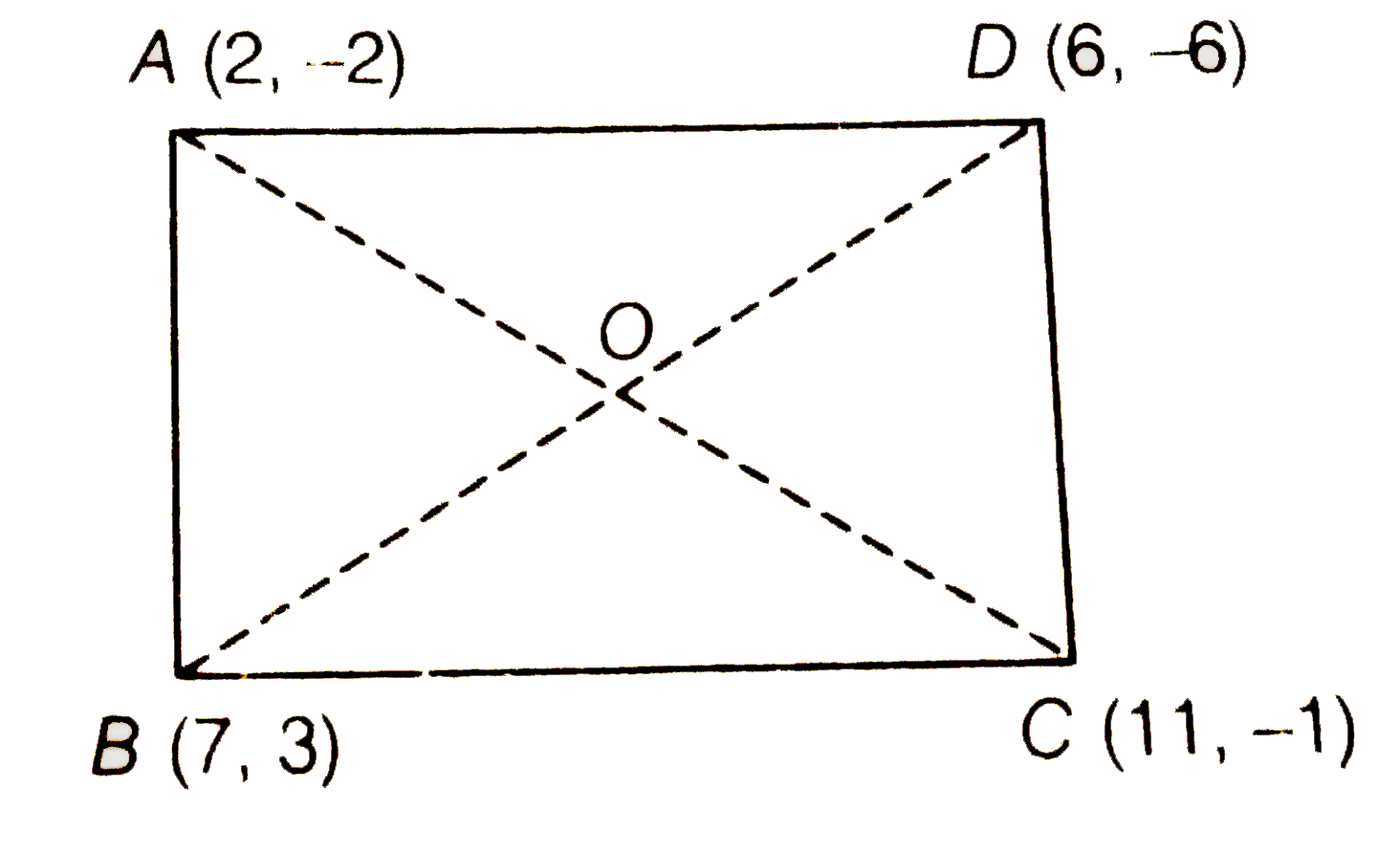What type of quadrilateral do the points A(2,−2),B(7,3),C(11,−1)andD(6,−6) taken in that order form?
Video Solution
Text Solution
To find the type of quadrilateral , we find the length of all four sides as well as two diagonals and see whatever condition of quandrilateral is satisfy by these sides as well as diagonals. Now , using distance formula between two points,
sides , AB =√(7−2)2+(3+2)2
=√(5)2+(5)2=√25+25
=√50=5√2
[since , distance between two points (x1,y1)and(x2,y2)=√(x2−x1)+(y2−y1)2]
BC =√(11−7)2+(−1−3)2=√(4)2+(−4)2
=√16+16=√32=4√2
CD =√(16−11)2+(−6+1)2
=√(−5)2+(−5)2
=√25+25=√50=5√2
and DA =√(2−6)2+(−2+6)2
=√(−4)2+(4)2=√16+16
=√32=4√2
Diagonals , AC =√(11−2)2+(−1+2)2
=√(9)2+(1)2=√81+1=√82
and BD =√(6−7)2+(−6−3)2
=√(−1)2+(−9)2
=√1+81=√82
Here , we see that the sides AB=CD and BC =DA
Also , diagonals are equal i.e., AC=BD
which shown the quadrilateral is a reactangle.

|
Topper's Solved these Questions
- CONSTRUCTIONSBook:NCERT EXEMPLARChapter:CONSTRUCTIONSExercise:Exercise 10.4 Long Answer type Questions
Explore 7 Videos
- INTRODUCTION TO TRIGoNOMETRY AND ITS APPLICATIONSBook:NCERT EXEMPLARChapter:INTRODUCTION TO TRIGoNOMETRY AND ITS APPLICATIONSExercise:Introduction To Trigonometry And Its Applications
Explore 60 Videos
Similar Questions
Knowledge Check
The quadrilateral ABCD formed by the points A (0, 0), B (3, 4), C (7, 7) and D (4, 3) is a
ArectangleBsquareCrhombusDparallelogramThe area of quadrilateral ABCD with A(1,1),B(7,-3) , C(12,2) and D(7,21) as its vertices is
A35 sq. unitsB65 sq. unitsC132 sq. unitsD115 sq. units
The area of the quadrilateral formed by the points (2,−1),(4,3),(−1,2)and(−3,−2) taken in order is
View SolutionShow that points P(2,-2) , Q (7,3) ,R(11,-1) and S(6,-6)
are vertices of a parallelogram.
View SolutionThe points A(5,−1,1),B(7,−4,7),C(1,−6,10)andD(−1,−3,4) are the vertices of a
View SolutionName the type of triangle formed by the points A (-5,6) , B (-4,-2) and C (7,5).
View SolutionShow that points A (4,-1)B (6,0) C (7,-2) and D (5,-3) are the veties of a square.
View SolutionThe points (2,−2),(8,4),(5,7)and(−1,1) taken in order constitute the vertices of a
View Solution

